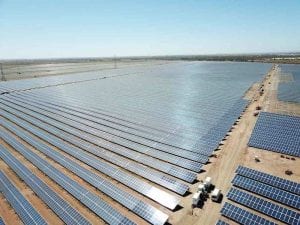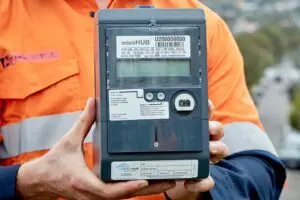Federal energy minister Chris Bowen is to present a revamped capacity market mechanism to state energy ministers on Thursday that is likely to look a lot more like an energy storage target than it does the “coalkeeper” proposal that preceded it.
The design of future energy markets – and particularly how to ensure enough dispatchable capacity in a grid making a rapid transition to renewables – has become one of the trickiest debates in Australia’s energy sector.
The Energy Security Board was tasked with coming up with a proposal, but the states and federal governments grew tired of its focus on incumbents and fossil fuels, and effectively took over the process at the last meeting of state ministers to develop their own designs.
Bowen flagged the arrival of the Capacity Investment Mechanism – developed by his department – in a speech last week marking the presentation of the first “state of the climate” report.
No details have been released, but the assumption is that it could share a lot of similarities to the “accelerated” energy storage markets proposed by a group of renewable energy lobbies, and to the renewable infrastructure roadmap introduced by the NSW government.
The push for a storage target is based on the assumption that most, if not all, coal and “baseload” gas plants will be retired over the coming decade, and will need to be replaced by enough dispatchable capacity to cover short term and seasonal variability in wind and solar.
Need for dispatchable capacity
That distpatchable capacity will need to come from battery storage, pumped hydro and other technologies competing for a role in the long duration storage market, along with a fleet of existing and some new fast-start gas plants.
The key to ensuring this capacity enters and stays in the market will be knowing how much capacity is required, and producing a mechanism, or price signal, that enables those projects to get the finance needed to get built.
The renewable energy target employed a commodity known as large scale renewable energy certificates, but the popular means in most state-based renewable energy auctions has been a mechanism known as a “contract for difference”, or in the case of NSW, long term energy service agreements, or LTESAs.
These are basically underwriting agreements that guarantee a minimum income, probably not enough to be wildly profitable, but enough to provide revenue certainty to get finance from bankers and other investors.
It may actually not cost the government anything at all if the storage market develops as hoped.
The similarity to the proposed storage targets would be the use of a series of tenders for large scale storage projects to meet any forecast shortfalls – in much the same way the the NSW government is doing through its own scheme.
Transition needs to speed up
Bowen hinted at such an outcome in an interview on ABC Radio on Wednesday morning.
“The most important thing we’ll discuss tomorrow, to be frank with you, is the next step on the capacity mechanism,” he said.
“You would have heard us talk about this before, this is the very important safety net to underpin the transition, we need the transition to renewables to be faster and to be more orderly.
“It’s been, for the last decade, too slow and too disorderly. There hasn’t been enough management of the transition by the federal government, and it’s occurred to slowly.
“We need both things to happen. It needs to be faster, but very, very much (it) needs to be more orderly, there needs to be more management of this transition.
Who will support it?
“Now, what I’ll be discussing with my state and territory colleagues’ tomorrow is a model for that capacity mechanism. This has been talked about for a long time, the previous government started the conversation, but they couldn’t finish it.
“What I’m planning to do is to take the conversation to the next level and to really, really drive home a good and faster outcome in relation to a capacity mechanism, which is so important to encourage more dispatchable renewable energy.”
But it’s one thing to have a bright idea, and another to get it supported. The NSW already has its own well-detailed scheme, and the other big states – Victoria and Queensland – have flagged their own storage proposals, so it’s not clear if they will bite at a national scheme.
This will be the biggest item on the agenda, but not the only one.
There is also a question about what to do with coal generators that give an exit date, which may then have to be delayed if insufficient new capacity is built on time.
Coal generators want payments
Some coal generators like Origin are pushing for payments to stay open, to cover the cost of maintenance. So far, such deals have been negotiated between generators and state governments, but the market wants more clarity on these measures, and the timing of closures.
It is also unclear to what extent the energy ministers will have the say on the federal government’s more controversial proposal for price caps on coal and gas markets, which appears to have upset everyone.
Some analysts suggest a smarter approach would be the sort of windfall tax that is now being imposed in Europe, and which would have consumer support. Labor, however, appears spooked by the threat of another “no mining tax” style campaign from an aggrieved and deep pocketed fossil fuel industry.
Back in the electricity market, there is still concern about the ESB and AEMC proposals for locational pricing mechanism which will impact developers of new wind and solar farms.
This complex issue has been boiling away from years, and there is no sign that the regulators are backing away from their stand. One group of investors was happy with recent progress and amendments, but it seems that few in the industry agree, and are pushing for a completely different approach to the problem.










